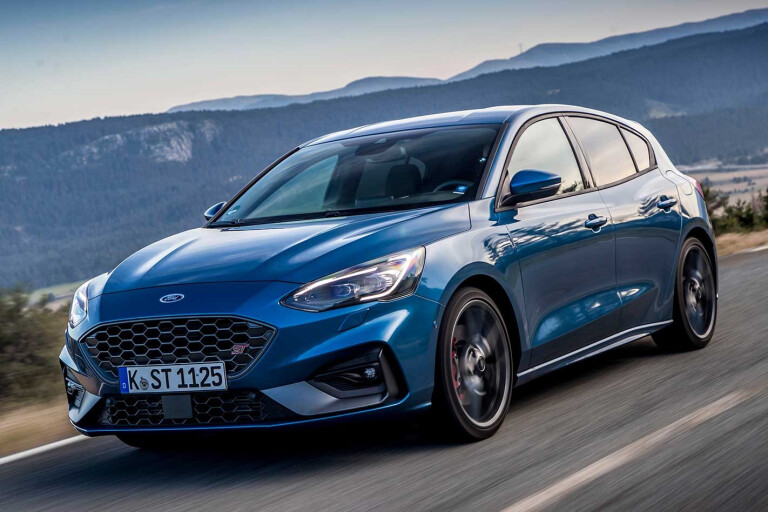
We would not normally begin a review of the latest hot hatchback with a reference to Ferrari, but bear with us.
When Ferrari launches a new car, journalists are ritually subjected to a tableaux of complicated graphs and diagrams. It’s dry but oddly compelling, and reasonable because its chassis electronics have become bewilderingly complex works of art and Ferrari would like us to appreciate that.

Well, Ford pulled a Ferrari for the fourth-generation Focus ST. Justifiably, too. This is a complicated car, an ocean of binary code away from the last ST, which was launched seven years ago with nothing like the same spread of technologies.
We were presented with graphs that plot torque from the upsized engine against the locking rate for the front axle’s electronic limited-slip differential. The hardware comes from GKN and is controlled via a locking clutch not unlike VW’s ‘XDS+’ system, so while the redline assigned to Track mode (yes, there are now modes) rockets up in a way we’re told would probably help the newcomer lap a quick circuit such as the Nürburgring faster even than the old Focus RS, its Slippery mode is reassuringly gentle.
There’s also brake-based torque vectoring to trim understeer, which not so long ago would have itself been the headline news but is now merely part of the scenery.

Another graph from the engineers tells us the continuously controlled adaptive dampers, which are reactive to the road surface but respond in just a couple of milliseconds, exert roughly twice as much force in Track as in Normal.
Admittedly, to get access to the full multi-mode functionality, you’ll need the optional Performance pack – otherwise the dampers operate only in a Goldilocks setting between Normal and Sport – and that includes further programs for rev matching, launch control and, goodness gracious, ‘flat’ shifting, for which you needn’t even lift off the accelerator pedal if you’re close enough to the redline.
Deprived of context, you might think we were talking about the latest Porsche 911 Turbo.
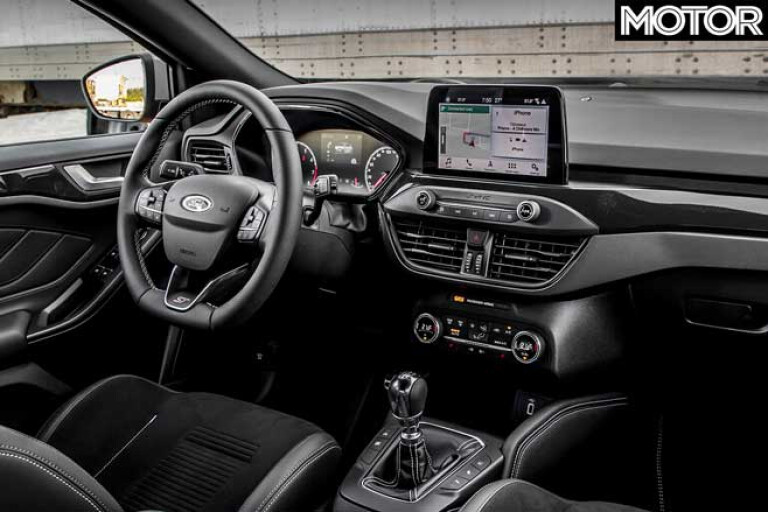
Despite all its tech, though, the front-drive Focus ST remains a familiar device, with a transverse four-cylinder turbo mated to a six-speed manual (or optional seven-speed auto). It has been engineered to be an enjoyable everyday performance car, with track-day potential but excellent road manners.
Does familiar mean predictable? Not in this case.
In an industry obsessed with reducing cubic centimetres, that engine is an overhauled version of the 2.3-litre from the entry-level Mustang and uses a version of the anti-lag system first seen on the Ford GT supercar. The 206kW it develops is competitive if unexceptional, but 420Nm is almost a fifth up on the old 2.0-litre Focus ST and the highest output in this class.

Through the mid-range, Ford says, the ST is quick enough to see off the old Focus RS – with closer gear ratios and so much torque pushing against less weight, that’s certainly plausible – and the sprint to 100km/h is done and dusted in 5.7sec, an improvement of 0.8sec over the previous ST.
Top speed is less important and capped at 250km/h. However, the fact that ST prototypes regularly nudged 275 on the autobahns hints at excellent aerodynamic efficiency, which matters if you care about rolling refinement and fuel economy.
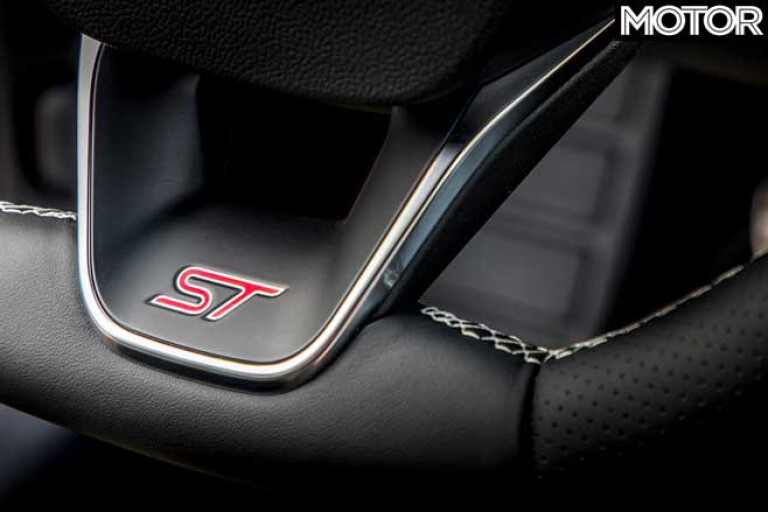
Yet if this car needs to excel in one single area, it’s chassis dynamics. We know the Focus’s lightweight C2 platform provides a basis for stellar handling traits, but the ST sits 10mm closer to the ground and has unique steering knuckles, firmer bushes, new spring and damper units (20/13 per cent stiffer front/rear), thicker anti-roll bars and bigger brakes. During our short test drive, the new ST proves immensely good fun, with a possibly class-leading blend of everyday manners and mischievous handling.
The engine may be a bit ordinary in the Mustang, but exerts its full personality in a humble Focus, spinning with an offbeat heave. With no active exhaust, there’s a generous degree of sound ‘enhancement’ for the cabin that may irk purists, but it’s well judged.
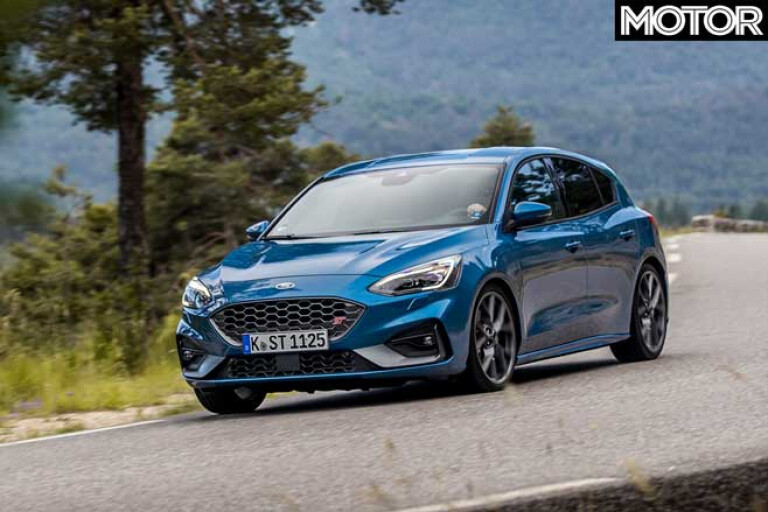
As with many European fast Fords, there’s quite a bit of flywheel effect when you lift off the accelerator, but response is otherwise good, hitting like a sledgehammer from 2500-4500rpm and revving freely to the redline. The powertrain gets a big tick.
At 11.3:1, the steering is very quick and takes some getting used to. In terms of feel, it doesn’t have quite the grit of a Renault Sport Megane or the gloriously natural heft of the Type R, but it’s similarly involving and allows you to explore the Focus ST’s handling, which you’ll want to do often.
Track mode untethers a playful side, but disable the stability control and the ST becomes as wildly flamboyant as you can handle. The grip generated by the front Michelins provides the foundation for controllable lift-off oversteer. On a trailing throttle, you might get some rivals – notably the Hyundai i30 N and the RS Megane – to behave in this way, but none does it so neatly or with such a basic and natural enthusiasm.
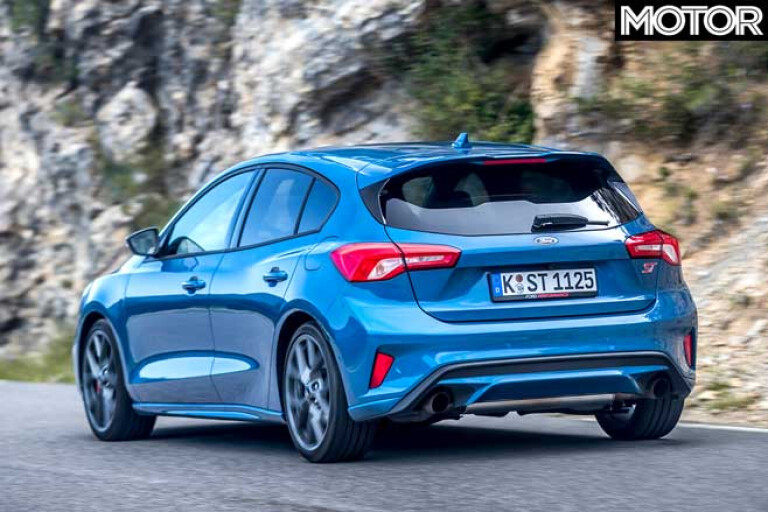
Mid-corner stability is very good, if not quite a match for more hardcore rivals, and body movements are nicely controlled. The Focus does feel a touch too nose-heavy, and through quick direction changes it can seem as though incipient pitch and roll motions will develop into something quite substantial.
It rarely gets that far, the suspension acting forcefully but deftly, and you’re left with a car that fluidly communicates any remaining reserves of grip and balance through its stance and rarely becomes too much of a slave to the physics. In short, it’s good, quick, confidence-inspiring fun, and the new electronic differential is effective and never overbearing.
Ford says the Focus ST was primarily developed for road use but shouldn’t feel out of its depth at the track days many customers frequent.
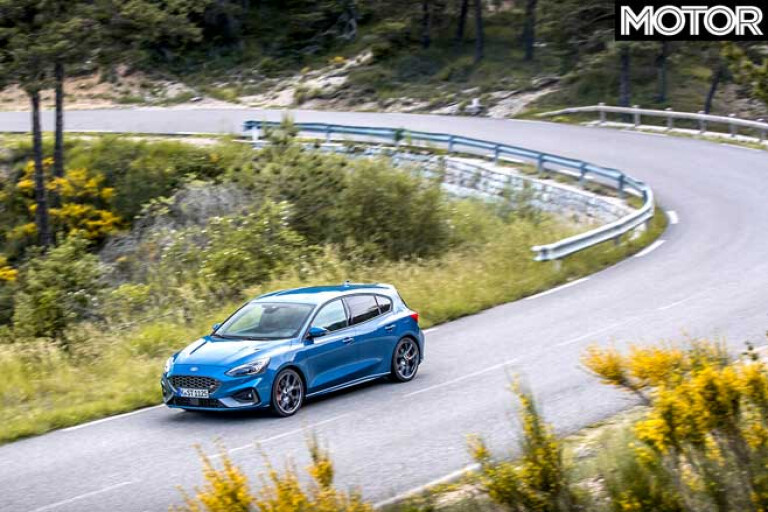
The brakes, with their larger discs, are said to resist fade four times better than the old car and use an electronic booster that adjusts the biting point to keep pedal feel consistent. It also has a ‘torque disturbance reduction’ system that dials out torque-steer by counter-torqueing the steering column when the e-diff gets punchy. Both elements seem decently beneficial.
The engineers admit the Civic Type R develops massive, nailed-down stability and is better suited to track work, but they’ve deliberately plotted a different course. Nimbleness over stability, and useability over lap times. The two cars will inevitably be compared, but they espouse contrasting approaches to the hot-hatch recipe.
Crucially, the Focus ST is an extremely rounded, practical device – a key part of the brief, but one that’s sometimes missed in this category. The boot holds 375 litres, there’s near class-leading passenger space, and backing the dampers off reveals ride quality that’s a match for the Golf GTI.
The new Focus ST might just be the missing piece of the puzzle in a closely fought segment. It isn’t the sharpest-handling hot hatch and perhaps not the easiest to live with, but it blends those conflicting worlds skilfully and with considerable charisma.

2020 FORD FOCUS ST SPECS
Engine: 2261cc inline-4, DOHC, 16v, turbo
Power: 206kW @ 5500rpm
Torque: 420Nm @ 3000-4000rpm
Weight: 1508kg
0-100km/h: 5.7sec (claimed)
Price: $44,690
Like: New tech; performance boost; clinically direct steering; blend of road and track manners; Performance pack
Dislike: Nose-heavy feel; not the ultimate track star
Rating: 4.5 out of 5 stars

COMMENTS